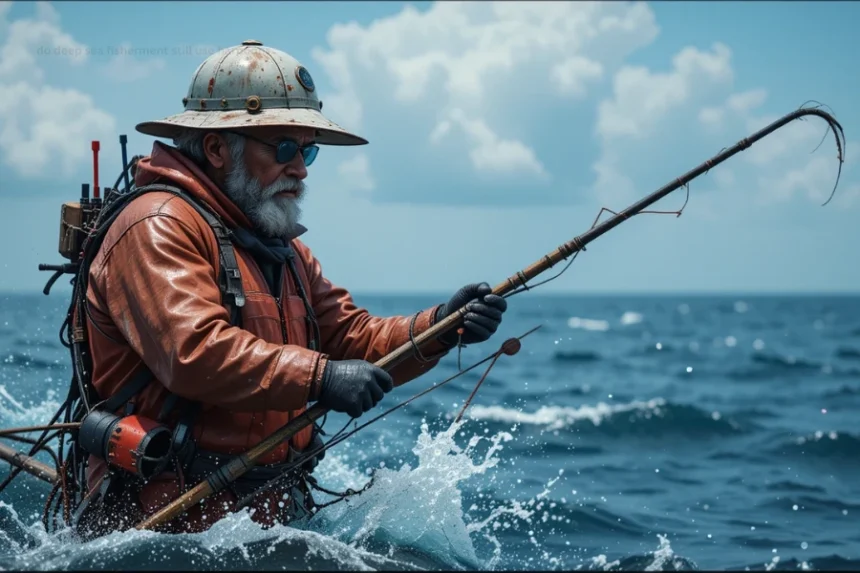The image of a brave fisherman wielding a harpoon to catch a mighty sea creature has long been romanticized in stories, movies, and traditional fishing practices. But in the modern world of advanced technology and sustainable fishing methods, many people wonder: do deep sea fishermen still use harpoons? This question touches on tradition, innovation, and the evolving landscape of marine harvesting. Let us examine the background, present methods, and prospects of harpoon use in deep-sea fishing.
The Historical Significance of Harpoons in Deep Sea Fishing
The history of harpoons is legendary and goes back thousands of years. Ancient societies like the Mesopotamians, Egyptians, and Polynesians hunted marine life, especially whales, huge fish, and other enormous sea creatures, primarily with harpoons. Their design evolved over centuries from primitive spears to sophisticated weapons fitted with i.e., barbs and cords, enabling hunters to secure their catch.
In the chronological tapestry of human fishing, harpoons were revolutionary, allowing explorers and coastal communities to harvest large marine mammals and fish efficiently. These traditional tools symbolized human ingenuity and a deep connection to the sea.
Transition from Traditional to Modern Methods
As the centuries progressed, the advent of modern fishing vessels, nets, and mechanized equipment gradually replaced the harpoon in commercial deep sea fisheries. Large trawlers, purse seines, and massive fishing fleets became the dominant means of harvesting marine resources. These methods proved more efficient, scalable, and capable of meeting the demands of global markets.
Yet, despite the widespread adoption of modern equipment, some traditional practices, including the use of harpoons, persisted, especially among indigenous communities and specialized fishermen. This brings us to the core question: Do Deep Sea Fisherment Still Use Harpoons?
Current Status of Harpoon Use in Deep Sea Fishing
The answer to whether deep sea fishermen still use harpoons is nuanced. Generally, in large-scale commercial fishing operations, harpoons are largely obsolete. Instead, the focus is on advanced technology like sonar, GPS navigation, large nets, and sophisticated catch processing systems.
However, in specific circumstances, individual fishermen and small crews still employ harpoons for targeted hunting, especially when dealing with large, elusive species such as giant squids, whales, or certain species of large fish. Here contexts where harpoon use persists:
1. Whale Hunting and Scientific Research
In some countries, whaling is still practiced legally under specific regulations and quotas. In these cases, harpoons are used to hunt whales in traditional or commercial whaling, often with large, specialized bowhead and sperm whale harpoons. Scientific research vessels may also use harpoons for studying or collecting samples from large marine animals.
2. Sustainable and Traditional Hunting
In regions like Norway, Iceland, and parts of Alaska, small-scale fishermen continue to hunt large fish or whales using harpoons as part of sustainable practices or indigenous traditions. In order to avoid overharvesting and to protect cultural heritage, these ancient methods are frequently subject to strict regulations.
3. Specialized Deep Sea Hunting for Large Specimens
Some hunters targeting rare or legally protected giant squid or large pelagic fish may resort to harpoons, especially in areas where these creatures are threatened or where legality favors traditional methods.
Technological Alternatives Replacing Harpoons
Modern deep sea fishing relies heavily on machinery and technology, which has largely replaced harpoons. Some of these include:
- Trolling equipment and longlines are used to capture big pelagic fish.
- Pelagic nets and trawlers capable of capturing thousands of fish at once.
- Sonar and underwater cameras to locate specific species.
- For traditional hunting or research, harpoon guns or pneumatic devices are used to swiftly and humanely capture huge marine animals.
These advances make fishing more efficient but less reliant on the manual, labor-intensive practice of harpooning.
Ethical and Environmental Considerations
In recent decades, the use of harpoons, especially in whaling, has become controversial. Many environmental groups oppose large-scale hunting of whales and large ocean species due to conservation concerns. Some countries have banned commercial whaling, while indigenous communities maintain traditional practices within legal frameworks.
The debate over harpoon use reflects broader questions about sustainability, animal rights, and cultural traditions. Despite technological advances, some argue that traditional harpooning practices are more humane or sustainable when conducted responsibly.
Is There a Future for Harpoons in Deep Sea Fishing?
While the average commercial deep sea fisherman today relies on technological methods, harpoons are not entirely out of the picture. Their future depends on:
- Cultural preservation: Indigenous communities often view harpoon hunting as a vital part of their heritage.
- Legal regulations: Laws governing whale hunting and conservation efforts influence whether harpoons are used.
- Advancements in humane hunting: Harpoons are often considered a more humane method of killing large animals compared to other means, but only if used responsibly and ethically.
Furthermore, some companies and individuals advocate for sustainable and traditional fishing methods, including harpoon use



